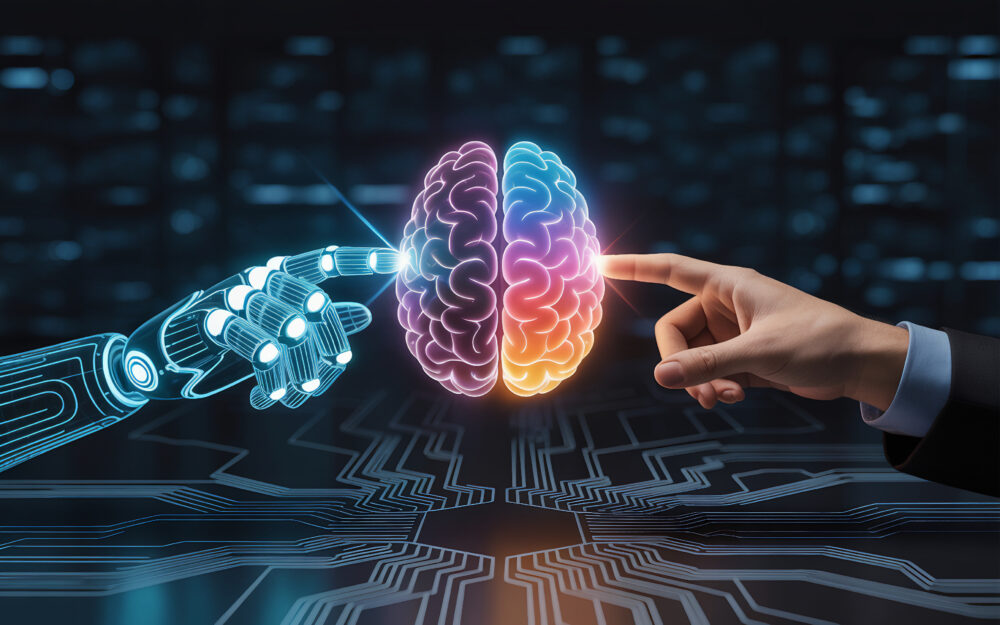
Machine learning: basics, processes, and potential
Machine learning is one of the most important technologies of the digital transformation. From intelligent voice assistants to predictive maintenance in industry, Machine Learning is everywhere, from our everyday lives to high-tech production. But what exactly is behind it? How does machine learning work, what techniques are available, and how can companies benefit from it in concrete terms? This article provides a practical overview.
Table of contents
- What is machine learning?
- How does machine learning work?
- Where is machine learning used?
- Important machine learning techniques
- Overview of machine learning algorithms
- Advantages of machine learning
- Looking to the future: machine learning in industry
- Machine learning: more than a trend – a key technology
What is machine learning?
Machine learning is a branch of artificial intelligence (AI). It does not involve fixed, pre-programmed processes, but rather systems that learn from existing data, recognize patterns, and make decisions based on this information – without any explicit programming of individual rules.
Instead of using manually specified instructions, machine learning models analyze huge amounts of data, draw conclusions from it, and continuously improve themselves by training with new information.
How does machine learning work?
The machine learning process involves several steps:
- Data collection: Structured or unstructured data – e.g., from sensors, ERP systems, or log files – forms the basis of every ML application.
- Preprocessing: The raw data is cleaned and converted into a suitable form.
- Training: An algorithm analyzes the data, recognizes patterns, and creates a model.
- Validation: The model is tested with new data to verify its accuracy.
- Deployment: In the application, the system uses the trained model to make decisions or predictions.
- Optimization: With each additional data entry, the model automatically improves – a key advantage of machine learning.
Where is machine learning used?
Machine learning is used in a wide variety of areas today – often invisibly, but with a major impact. In industry, ML models analyze sensor data to detect malfunctions at an early stage. In logistics, they optimize routes in real time. The retail sector uses machine learning for personalized product recommendations.
ML is also playing an increasingly important role in medical technology, speech recognition, quality assurance, image recognition, and financial analysis.
In short, wherever data is generated and decisions are made, machine learning can make processes smarter and more efficient.
Important machine learning techniques
There are different types of machine learning that are used depending on the task at hand:
- Supervised learning: The model learns from training data with known results by classifying the data and performing regression.
- Unsupervised learning: The system clusters the material and independently recognizes patterns without predefined categories, based solely on the data provided.
- Reinforcement learning: The model learns through trial, reinforcement, and error in real-time environments, such as autonomous robots or production control.
These machine learning techniques are implemented using appropriate algorithms, which vary depending on the complexity and objectives.
Overview of machine learning algorithms
Depending on the application, these algorithms are selected, adapted, and regularly optimized for machine learning training. Some of the most commonly used machine learning algorithms are:
- Linear regression: Prediction of numerical values, e.g., sales or energy consumption
- Decision trees: Classification and decision-making based on clear rules
- Neural networks: Complex pattern recognition, e.g., in image processing
- k-means clustering: grouping similar data points
- Support vector machines (SVM): separation of data classes with high precision
Advantages of machine learning
The use of ML brings numerous advantages – especially in data-driven areas such as Industry 4.0, logistics, energy, and e-commerce:
- Automated analysis of large amounts of data
- Early detection of deviations and errors
- Predictive maintenance in production
- Improved customer engagement through personalization
- Greater efficiency through real-time process optimization
Companies that leverage machine learning gain deeper insights into their data and can make faster, data-driven decisions.
Looking to the future: machine learning in industry
The potential of machine learning for industry is far from exhausted. In the future, ML will not only automate individual processes, but also intelligently network entire production chains. Real-time data from machines, supply chains, and quality assurance can be combined to dynamically control production processes.
Self-learning systems will help identify bottlenecks early on, plan maintenance in advance, and use resources more efficiently. In combination with technologies such as IoT, cloud computing, and edge AI, machine learning will become a central pillar of Industry 4.0 – and thus a competitive advantage for companies that invest now.
Machine learning: more than a trend – a key technology
Machine learning is not a topic for the future but has long been part of everyday life in many areas. Those who familiarize themselves with the techniques, algorithms, and possible applications at an early stage will lay the foundation for intelligent systems that think and learn.


